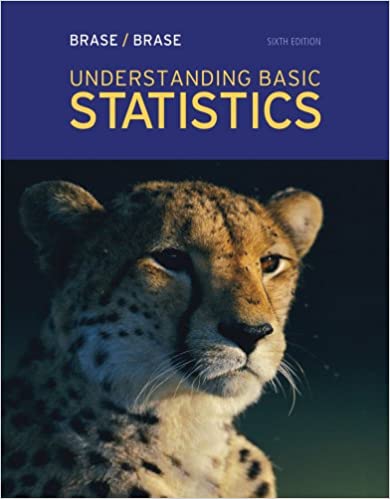
Understanding Basic Statistics 6th Edition by Charles Henry Brase,Corrinne Pellillo Brase
Edition 6ISBN: 978-1111827021
Understanding Basic Statistics 6th Edition by Charles Henry Brase,Corrinne Pellillo Brase
Edition 6ISBN: 978-1111827021 Exercise 2
Statistical Literacy Explain the difference between a simple random sample and a systematic sample.
Explanation
A simple random sample assures that every sample of size n has an equal chance of being selected.
A systematic sample first puts all individuals or objects in some kind of ordered list, and then every k th individual is selected.
An example most easily highlights the difference between a simple random sample and a systematic sample. If you list the names of all 300 business majors at a large university alphabetically by last name and then choose a systematic sample of size 30, you will choose every 10 th student name. (Note that the first student selected will be randomly chosen from the first 10 names on the list.) You will end up selecting individuals whose last name begins with a variety of letters of the alphabet. Because of this selection method, it would be impossible for the first 30 students on your alphabetical list to be in your systematic sample.
Now consider taking a simple random sample of size 30 from the same group of 300 students. It is certainly possible that your simple random sample could include the first 30 students on the alphabetical roster of names. It could include ANY group of 30 students, no matter where their name appears on the alphabetical roster. That is the definition of a simple random sample.
A systematic sample first puts all individuals or objects in some kind of ordered list, and then every k th individual is selected.
An example most easily highlights the difference between a simple random sample and a systematic sample. If you list the names of all 300 business majors at a large university alphabetically by last name and then choose a systematic sample of size 30, you will choose every 10 th student name. (Note that the first student selected will be randomly chosen from the first 10 names on the list.) You will end up selecting individuals whose last name begins with a variety of letters of the alphabet. Because of this selection method, it would be impossible for the first 30 students on your alphabetical list to be in your systematic sample.
Now consider taking a simple random sample of size 30 from the same group of 300 students. It is certainly possible that your simple random sample could include the first 30 students on the alphabetical roster of names. It could include ANY group of 30 students, no matter where their name appears on the alphabetical roster. That is the definition of a simple random sample.
Understanding Basic Statistics 6th Edition by Charles Henry Brase,Corrinne Pellillo Brase
Why don’t you like this exercise?
Other Minimum 8 character and maximum 255 character
Character 255


